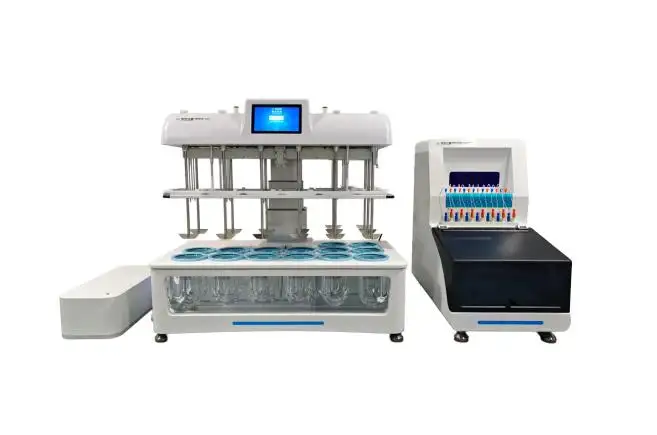Physical Properties of Pharmaceuticals shape how a tablet wets, swells, and dissolves. They include particle size, polymorph, hardness, porosity, and moisture. Each one leaves a fingerprint on the stability curve. Get them right and batches run smooth. Get them wrong and timelines slip. In this post, we explain what these properties are in plain words. We show how they reveal hidden risks long before a failure. And we share a simple way to capture clean, decision-ready data. One twist changes everything - and it's often missed.

Why Properties Decide Stability (And Variability)
Drug stability is written into the material long before the first test run. Particle size and distribution control surface area and wetting. Polymorph form dictates solubility and transformation risk. Hardness and porosity influence liquid penetration, while surface energy and residual moisture can accelerate or slow degradation. When any of these shift, the dissolution curve shifts with them - sometimes subtly, sometimes enough to trigger an investigation.
Day to day, labs face practical hurdles that magnify these effects. Powders can agglomerate, creating slow and erratic wetting. Hydrophobic actives can vanish into tubing walls. Over-lubrication flattens early time points. Fines create unwanted burst release. A result that looks like "instability" may, in fact, be the interaction between unmanaged Physical Properties of Pharmaceuticals and imperfect handling.
✅ Typical QC pain points tell the story:
- Manual sampling and timing variance that smears time points
- Adsorption or carryover in wetted paths that depress concentration values
- Filters that clog at the worst moment, shifting the pull and the profile
- Irregular sample collection that complicates trending and review
Stability becomes harder to read when the test itself introduces noise. Remove the noise, and the underlying material behavior comes into sharp focus.

How Raytor Turns Material Behavior Into Reliable Data
"More innovation and intelligence" is not a slogan for us; it's a design rule. We build automation that respects the Physical Properties of Pharmaceuticals instead of fighting them.
First, sampling must be exact. Our high-precision sampling pump pulls consistent volumes at defined moments, which means the curve reflects the tablet, not the operator. That precision is paired with a chemically stable, low-adsorption Teflon pipeline. Sticky or hydrophobic molecules are less likely to vanish into the flow path, and corrosion is kept at bay even with challenging media.
Second, filtration should support the method - not hijack it. Dual online filters can be installed in series. The system automatically discharges the primary filtrate to saturate the filter before analytical collection begins. This pre-conditioning step smooths flow, reduces clogging, and protects the integrity of early time points, where small errors can cascade into big conclusions.
Third, collection must be simple and scalable. Our optimized pathway routes solution directly into 1.5 mL liquid vials on a 210-position rack. Full profiles, replicates, and method screens can run in one session without sacrificing traceability. This is especially useful when you are exploring how Physical Properties of Pharmaceuticals respond to changes in binder levels, coating thickness, or milling parameters.
Finally, compendial alignment reduces friction. Basket and paddle methods - the primary legal dissolution methods in national pharmacopoeias - are fully supported for general tablets, immediate-release, enteric, and extended-release dosage forms. When the test follows the book, property-driven differences (such as coating integrity, matrix swelling, or porosity gradients) show up as real signals on the curve instead of artifacts to explain away.
✅ From Bench Insight To Batch Control
Standardizing sampling, filtration, and collection pays off across the product lifecycle:
- Cleaner curves with tighter confidence intervals
- Earlier visibility of subtle drift in hardness, porosity, or polymorph ratio
- Faster method development and smoother tech transfer
- Data packages that stand up to regulatory and internal scrutiny

With the human variance dialed down, a change in the Physical Properties of Pharmaceuticals reads as a true effect. Teams can tune particle size distributions, re-balance excipients, or adjust compression force and see the impact clearly on dissolution behavior - without the fog of inconsistent test steps.
What This Means For Your Pipeline (And Your Timelines)
When property-sensitive workflows become routine, speed follows. Formulators can run focused experiments - hardness vs. early time points, moisture pickup vs. lag time, porosity vs. plateau - and make decisions the same day. QC can spot trending issues before they become deviations. Manufacturing gains a tighter loop between material characterization and process parameters.
In practical terms, you move from "we think the batch is different" to "we can quantify what changed." That shift builds confidence across functions:
• R&D gets a reliable feedback loop during screening and scale-up.
• QA gains robust, compendial-aligned data for reviews and submissions.
• Production sees fewer surprises because material behavior is measured, not assumed.
• The payoff is not just better science; it's a faster path to stable, compliant products.
✅ What You'll Notice In The Lab
• More reliable concentration data with reduced adsorption loss
• Fewer interruptions from filter saturation and clogging
• Higher throughput via automated, direct-to-vial collection
• Clearer linkage between Physical Properties of Pharmaceuticals and dissolution behavior
Not every stability challenge needs a new formulation. Sometimes it needs a smarter testing system - one that preserves the signal carried by the material itself.
Bottom line: Stability lives in the material, and the material speaks through dissolution. Raytor's approach - accurate sampling, intelligent online filtration, and orderly collection - lets that signal come through cleanly. You see the true effects of particle size, coating design, matrix structure, and moisture control. You make decisions faster. You transfer methods with fewer stumbles. And you build a stability story that holds up under the microscope.
Final Words
Ready to convert material insights into predictable outcomes? Talk to a Raytor specialist, book a live demo, or request an application note to see how automated, intelligent dissolution clarifies the role of Physical Properties of Pharmaceuticals in real-world stability - across immediate-release, enteric, and extended-release products.



